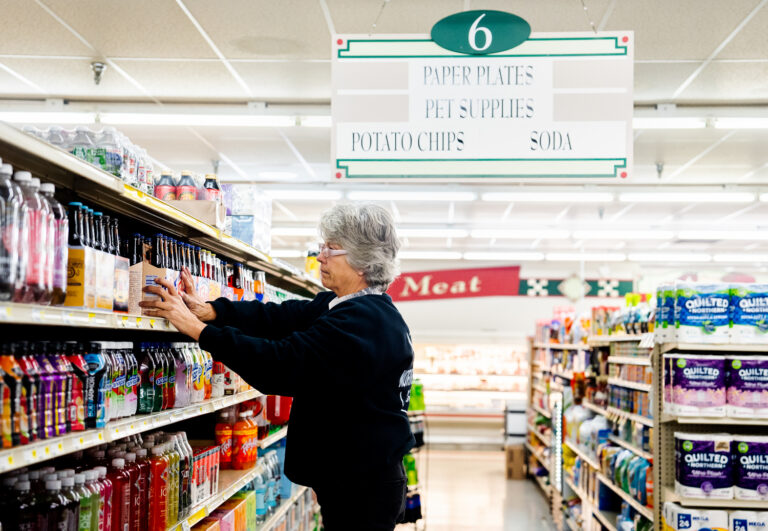The consumer price index is widely used by Americans to determine inflation, but the Bureau of Labor Statistics only surveys American counties that include a metro or micropolitan area.
In rural southwest Illinois, fourth generation grocery store owner Craig Norrenberns said his three shops across the region are “fighting the price battle.”
“There’s no doubt that people are having to watch their wallets a little bit closer,” Norrenberns said.
A head of lettuce is a good example. What normally costs $1 soared as high as $5 several times in the past couple months, he said. Norrenberns’ stores stuck with the inflated price, while some other grocery chains may have marked-up other items to compensate for pricey lettuce.
“We just ride the market,” he said. “I feel like maybe that’s a more honest way to go to business.”
Yet the grocery’s most rural store in Red Bud, Illinois, is in an area not included in the Consumer Price Index, the most widely used tool to measure inflation in the U.S. The Bureau of Labor Statistics only surveys counties that include a metro or micropolitan area — a county without a town of at least 10,000 people is left out.
At the same time, rural residents may be hardest hit by rising prices for groceries, gas, healthcare and heating, said University of Wisconsin-Madison economics professor Tessa Conroy, who co-authored an editorial on the issue earlier this month.
“When we look at the categories where prices are going up, those are categories where rural communities tend to spend more,” Conroy said.
The limitations of the Consumer Price Index stem from its creation and resources, according to Steve Reed, an economist at the BLS.
While it’s an ongoing topic of research at BLS, Reed said a new survey would be needed to best understand price changes in rural areas because the spending habits are not the same as in the areas currently surveyed.
“People in very rural areas might have some different spending patterns,” Reed said. “They might be shopping in a little bit different places. They might face some different price change that we’re not capturing.”
Just how many people are left out of the survey is also a point of debate.
Conroy and co-author Stephan Weiler of Colorado State University estimate 14% of the U.S. population is not currently included in the survey. Reed, with BLS, says it’s 7%. The difference lies in how the two define “rural.”
The BLS uses a working definition from the U.S. Census Bureau, so counties that don’t have a metropolitan or micropolitan statistical area in them are not eligible for the CPI survey, Reed said.
The economics professors used a definition from the U.S. Office of Management and Budget that was cited by U.S. Department of Agriculture in 2022. Rural, by this definition, includes counties with towns smaller than 2,500 people and stand-alone cities with populations less than 50,000.
Either definition leaves out wide swaths of counties in western Nebraska, Kansas and Oklahoma, while less-populated counties are scattered across Iowa, Missouri and southern Illinois.

Residents in communities like these already spend a larger amount eating at home, Conroy said. Pair that with limited flexibility for grocery options and longer drives to try another store, rural residents can be trapped.
“Ultimately, it’s going to mean that we don’t see and account for the lived experience of rural communities,” Conroy said.
For grocery store owner Norrenberns, two of the towns where he owns stores — Millstadt and Mascoutah, Illinois — could be surveyed for inflation, while his third location in Red Bud, located 20 miles south of the others, is not eligible.
Norrenberns said there are valid reasons why urban inflation would be better documented, but that doesn’t mean it shouldn’t be improved in rural areas.
“How they do that, I’m not sure,” he said.
This story was produced in partnership with Harvest Public Media, a collaboration of public media newsrooms in the Midwest. It reports on food systems, agriculture and rural issues. Follow Harvest on Twitter: @HarvestPM. Will Bauer is the Metro East reporter at St. Louis Public Radio.
9(MDM5MjE5NTg1MDE1Mjk1MTM5NjlkMzI1ZQ000))

